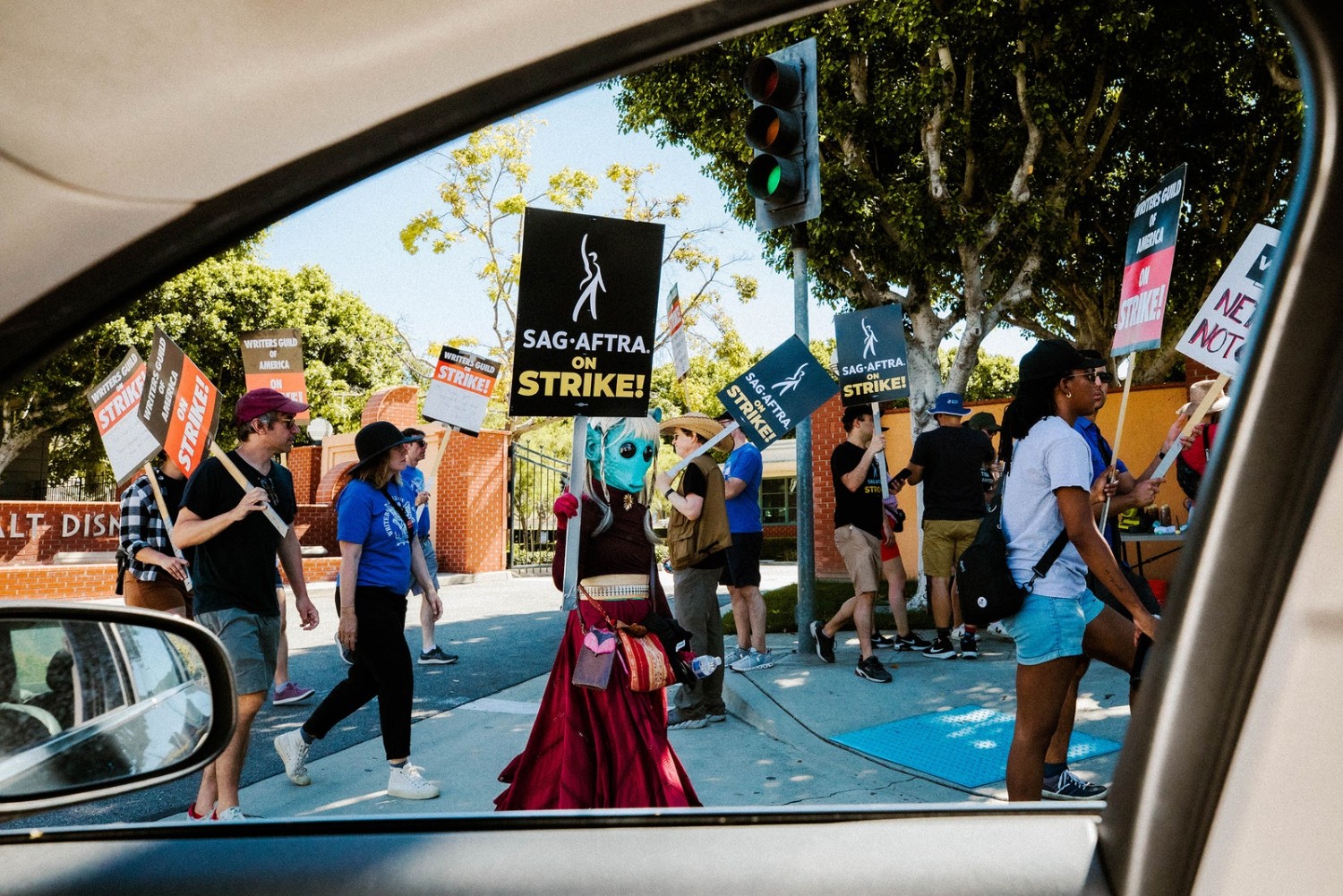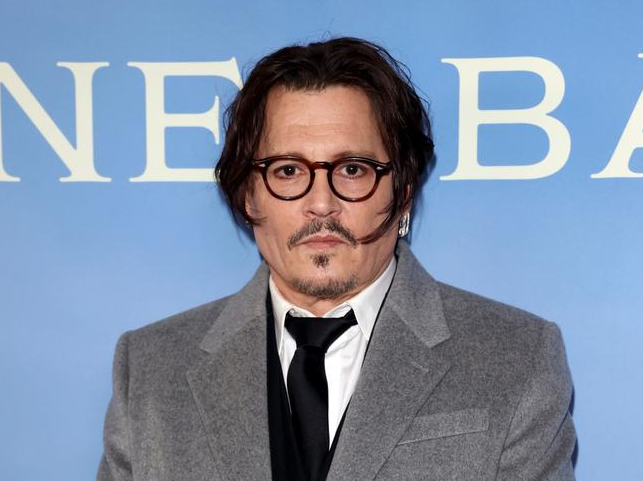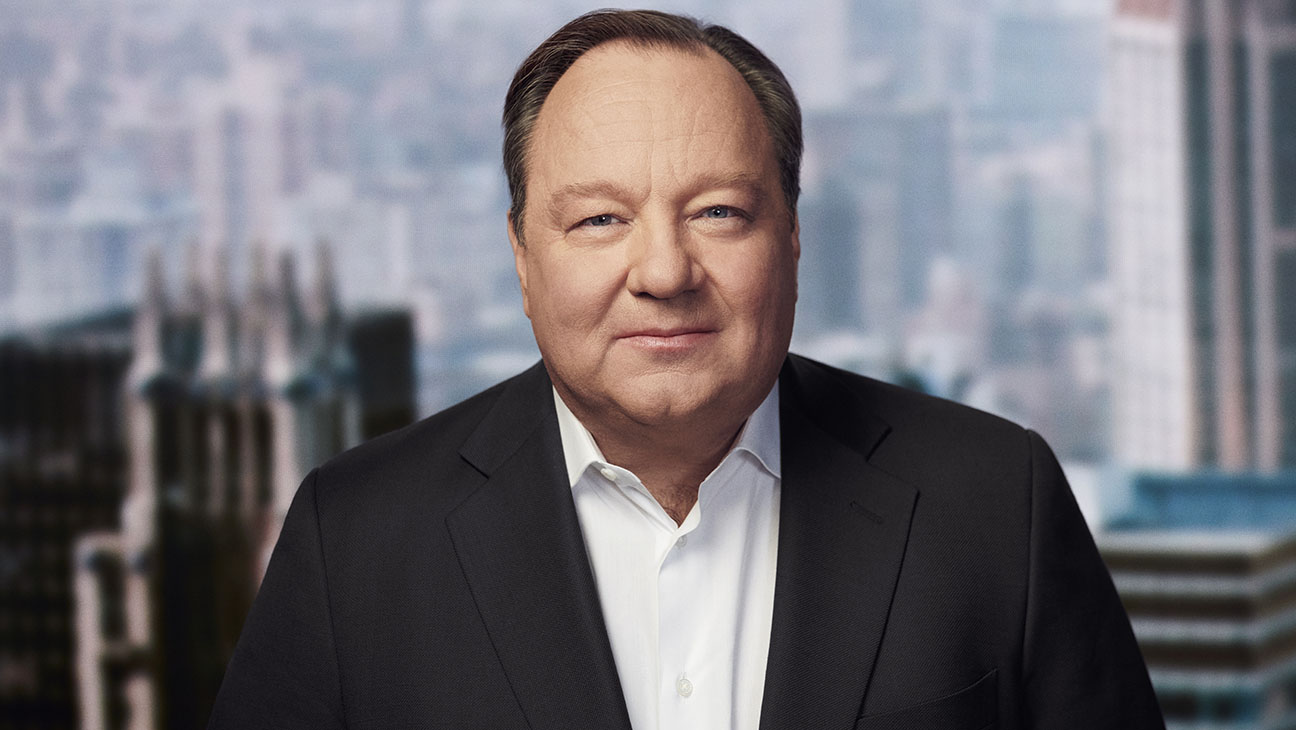This article is more than
1 year oldHollywood Faces Its Post-Strike Future

On his way down a red carpet in Dallas. It was the première of “The Iron Claw,” an A24 movie about the Von Erich clan of professional wrestlers. On the carpet, an “Entertainment Tonight” reporter informed White, “We just heard moments ago—the strike is over!” and stuck the mike in his face. “That’s amazing,” White said, seeming taken aback. Asked how he felt, he added, “I don’t know the details of the deal, but I’m sure that sag got what we wanted.” Since mid-July, when the actors’ strike began, the sight of celebrities such as White and his co-star Zac Efron traipsing red carpets has been rare; actors were barred from promoting projects connected to major studios and streamers. White and Efron were in Dallas only because “The Iron Claw” received an “interim agreement”—an exception given to indie projects abiding by the guild’s proposed terms, and one of those bits of technical jargon that became Hollywood parlance over the tumultuous last few months.
The sag-aftra strike lasted a hundred and eighteen days, and overlapped with the Writers Guild of America’s strike, which began in May and lasted a hundred and forty-eight days—the first time both guilds had been on the picket lines simultaneously since 1960. Back then, the central issue was residual payments for movies replayed on television, a relatively new phenomenon for a relatively new medium. This time, a technological change once again upended how entertainment is consumed and, subsequently, how actors are paid. Instead of the birth of television, it was the birth of streaming. Actors who were used to living off residual payments from network roles between gigs had found themselves receiving paltry checks for equivalent work on streaming shows. In July, on the cusp of the strike, I spoke to cast members from “Orange Is the New Black,” who said that they had never truly shared in the wealth the series generated for Netflix, even as the show helped build the foundation of the streaming economy. Although the final deal still has to go through approval formalities at the guild, and the fine print has not yet been released, sag’s hard-won agreement includes performance-based bonuses for actors on streaming shows that become big hits. For the studios represented by the Alliance of Motion Picture and Television Producers, or A.M.P.T.P., the concept was a non-starter before the strike. Now it’s Hollywood’s new reality.
But the issue that unexpectedly came to the fore, as it did for the writers, was artificial intelligence. In August, as Hollywood was entering an end-of-summer malaise, I spoke to a professional background actor named Vincent Amaya, who appears in a lot of police procedurals. “I do not want to be scanned,” he said. “They can use my image and then always have me crossing in a cop station without paying me. That’s my livelihood.” A.I. is still a vast unknown, but both guilds saw it as an existential threat. In an interview this week on the industry podcast “The Town,” Duncan Crabtree-Ireland, the guild’s astoundingly named national executive director and chief negotiator, said that the final sticking point had been the use of “synthetic performers,” or what he termed “synthetic fakes”—essentially, nonexistent people remixed from real ones. (Perhaps you’ve seen footage online of normal-seeming extras who, on closer look, have eight fingers on one hand.) sag wasn’t fighting to stop the A.I. revolution but for its members to receive “informed consent” and compensation when their images are used. Once again, a new technology preceded a labor upheaval.
On “The Town,” Crabtree-Ireland described the mood in the negotiating room as “cordial” but “serious,” with occasional flareups. In 1960, the actors’ strike was led by none other than Ronald Reagan, who went on to become one of the country’s more anti-union Presidents. This time, the guild president, working alongside Crabtree-Ireland, was Fran Drescher, whose idiosyncratic style, known to fans of “The Nanny,” will be inextricable from this chapter in Hollywood history. When the talks broke down during the summer, she gave an impassioned speech excoriating the industry’s C.E.O.s and accused the studios of giving the guild “a leck and a schmeck,” Yiddish for “a lick and a sniff.” When the two sides finally started meeting again, in the fall, reports spread of her unconventional tactics, such as bringing a heart-shaped plushie to the bargaining table. Perhaps this was Drescher’s answer to Richard Nixon’s “madman theory”: throw off the enemy with an ounce of mishegoss. Earlier this week, the Hollywood Reporter asked, “Will she be remembered as an eccentric scene-stealer or a fiery labor iconoclast?” I’d say both. Or, as the theme from “The Nanny” puts it, “Who would have guessed that the girl we described was just exactly what the doctor prescribed?”
Now, at long last, Hollywood can get up and running. Annette Bening can hit the Oscar campaign trail for “Nyad.” Ridley Scott can finish “Gladiator 2.” We’ll finally find out what happens next season on “Severance.” Stars can trade their picket signs for tuxes and gowns. And the countless crew members, costume designers, caterers, and agents who’ve been sitting out the past several months—often at dire financial cost—can get back to work. The industry they’re returning to may be more equitable than it was, but that doesn’t mean it’ll be smooth sailing. The streaming economy had already been facing a reckoning, with Wall Street demanding profitability, and studios are tightening their belts and contracting production. As Brooks Barnes writes in the Times, “Most analysts say that there are too many streaming services and that the weakest will ultimately close or merge with bigger competitors.” No sooner did the strike end than the executive Jeffrey Katzenberg predicted that A.I. will reduce the workforce for animated films to less than ten per cent of what it is, and Warner Bros. shelved the completed film “Coyote vs. Acme” for a tax writeoff. Peak TV appears to have peaked, and theatrical moviegoing is in crisis. What lies ahead is uncertain. But, as this historic year demonstrated, some crises are worth the trouble. ♦
An earlier version of this article misstated the name of the film “The Iron Claw.”
New Yorker Favorites
-
First she scandalized Washington. Then she became a princess.
-
The unravelling of an expert on serial killers.
-
What exactly happened between Neanderthals and humans?
-
When you eat a dried fig, you’re probably chewing wasp mummies, too.
-
The meanings of the Muslim head scarf.
-
The slippery scams of the olive-oil industry.
-
Critics on the classics: our 1991 review of “Thelma & Louise.”
Sign up for our daily newsletter to receive the best stories from The New Yorker.
Michael Schulman, a staff writer, has contributed to The New Yorker since 2006. His most recent book is “Oscar Wars: A History of Hollywood in Gold, Sweat, and Tears.”
Keywords
<p>They have been blasted from car stereos on the streets of New York City, played by DJs at nightclubs across the US, dubbed into Chinese on TikTok and inspired merengue songs...
Island nation erupts into violence, three dead
Taylor Swift concert photo horrifies internet
Sean 'Diddy' Combs asks judge to reject lawsuit alleging rape of 17-year-old girl in 2003
Ukraine finds itself in a grave situation. Russia appears to be advancing
Ellen to make TV comeback after two years
How the West's plan to punish Russian oil backfired
Will Zionism survive the war?
Putin's Preparing Better Than Us for a Long War
Putin’s choice of new defence minister shows he’s preparing for confrontation with the West




